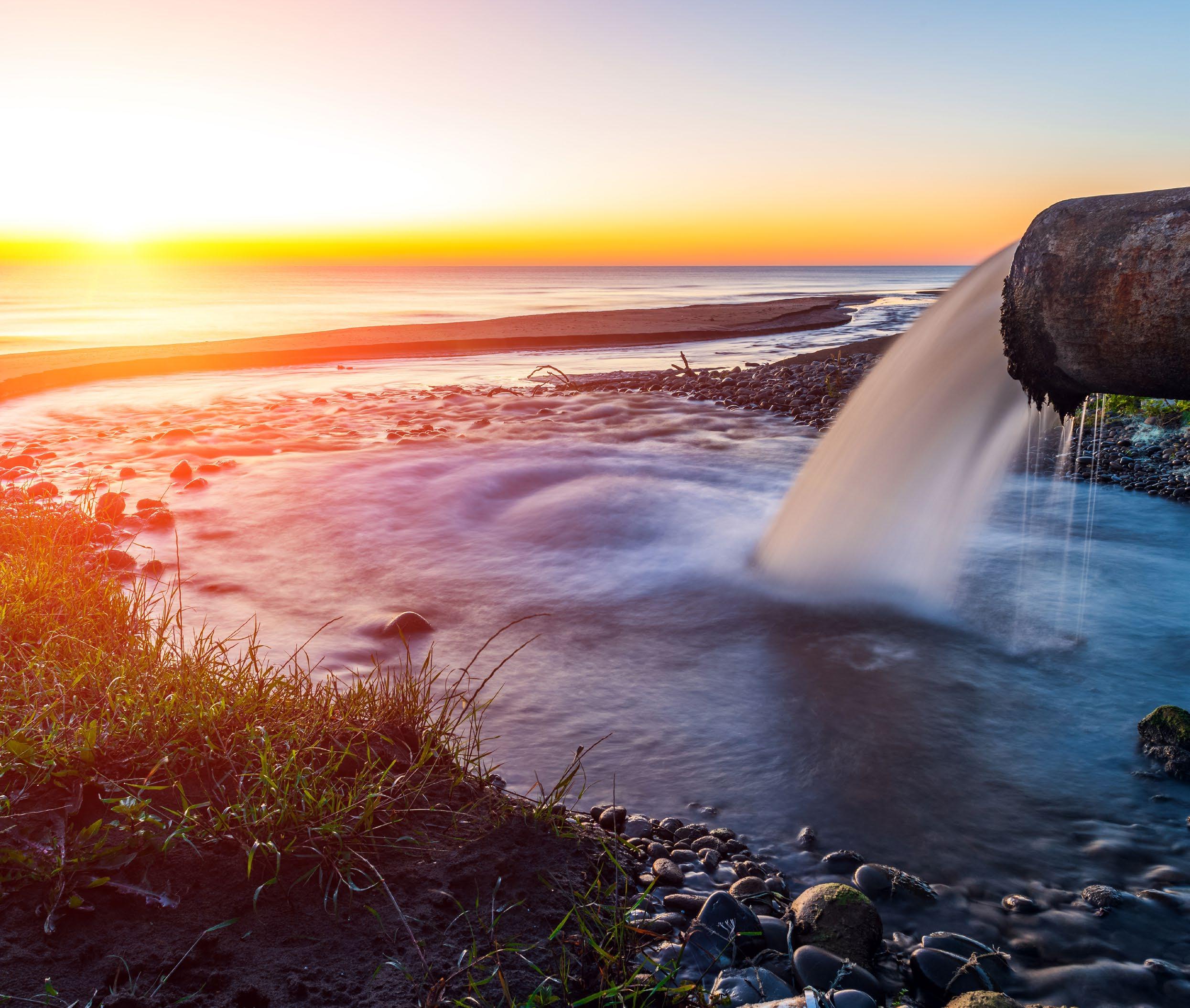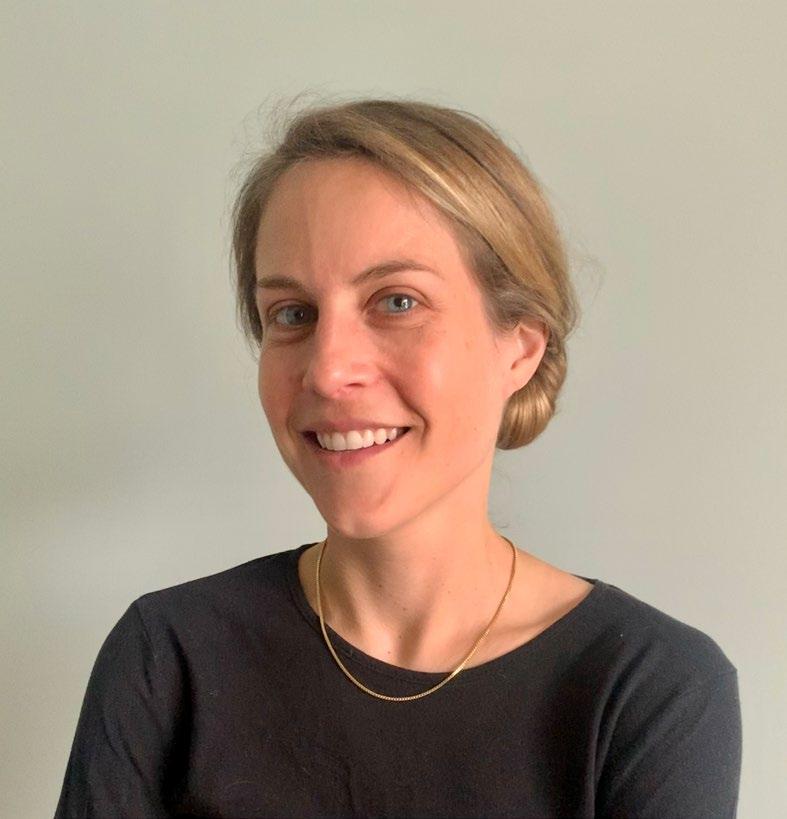
7 minute read
Innovation is Key - Solenis, Chief Sustainability Officer Lotta Kanto Öqvist
How do we raise the profile of Climate Adaptation?
Decarbonisation, or the transition to a low-carbon economy, remains the single most tangible and measurable way for corporations, cities, governments, and even individuals to demonstrate they are ‘doing something’ to combat climate change.
Advertisement
Much like the ‘war on drugs’ and the ‘war on terrorism’, the ‘war on climate’ is positioned as a war we must win - at any cost. Anyone advocating Climate Adaptation has traditionally been labelled a ‘defeatist’, or adaptation was best left up to legislation, environmental media, and conservation organisations.
Yet, a recent high-profile piece in the Harvard Business Review, here, and a growing list of conferences suggests a not so subtle inflection appears to be raising the profile of Climate Adaptation, and the technologies that support industry and society’s efforts to adapt to the new water reality.
Where and how can WaterTech play a role?
In our collective effort to save lives and livelihoods, as a result of an already changed climate, software and hardware technologies need to play a larger role. Many of these innovations are rooted in WaterTech, with solutions for managing a wide range of water quantity and quality risks.
Whilst the water industry has embraced Net Zero, the Climate Adaptation side of ClimateTech is increasingly seen as where WaterTech companies can have the greatest impact.
Unfortunately, WaterTech corporates, as well as startups, still see their offerings as water innovations for the water industry (i.e: utilities), which keeps them off-radar from the climate community seeking innovations to help farmers, cities, households, and a wide range of industries adapt to a new reality where water security is not guaranteed anymore.
Many are suggesting that WaterTech companies should explore and highlight how their innovation supports their customers’ Climate Adaptation, which would allow them to also position themselves as part of ClimateTech.
Investor Spotlight
We asked five investors to briefly describe climate adaptation technology trends or market opportunities they find most compelling.
Tom Ferguson
Managing Partner at Burnt Island Ventures
Peter Yolles
Managing Partner at Echo River Capital
John Robinson Alex Crowell Will Sarni
Partner at Mazarine Ventures Partner at PureTerra Ventures Founder and CEO at Water Foundry
It's a relief that the mitigation vs adaptation debate is over and it's clear we need to do both. Reuse and recycling, particularly in agricultural and industrial contexts will be vital - so filtration, zero liquid discharge, nutrient management are all on the mind.
There is also a ton to be done on efficiency - both in terms of use and operations of water systems, but also capital deployment. Adaptation will take trillions of dollars and we need to make sure they are deployed as carefully and accurately as possible. As a water technology impact fund, Echo River Capital invests to digitise, decentralise and decarbonise the water economy to protect the environment, advance human health, and strengthen climate resilience.
Globally, water networks are severely undermonitored. There is a critical need to understand and manage in real-time the stocks, flows and quality of water
Legacy, centralised treatment systems are over-burdened and don't address a raft of emerging contaminants such as biopharmaceuticals and endocrine-disrupting chemicals.
And finally, over 10% of global greenhouse gas emissions are generated from managing water. Together, these are massive climate resilience challenges that we as investors can help solve together with entrepreneurs, technologists and policymakers. Climate adaptation is one of 4 pillars of our thesis around “water as a risk” for industry and society. The consequences of a changed climate are creating water quantity and quality risks for water utilities; however, most of the investment opportunities we are purusing are ironically outside of the so-called ‘water industry’.
Our strategy takes us into companies with IOT, data science, and hardware/ engineering innovations that support the waterrelated climate adaptation efforts of agriculture, aquaculture, buildings, finance & insurance, manufacturing, mineral processing, and transportation. As a venture capitalist investing specifically in water technology, we feel the entire system is broken. The top-down regulation/policy driven approach just doesn’t work.
Distilled, the core issue of climate change is water and how we access it.
The modernisation of infrastructure and consideration of the ever-changing water cycle instead of traditional watershed management is the first step toward truly making an impact. Water connects all sectors and until water is the centre of all climate discussions and raised in funding priority the climate spiral we are experiencing will not only continue it will get infinitely worse. The compelling market opportunities to address the impact of climate change on water are in; dramatically reducing water demand at a hyper local scale (conservation and reuse), alternative sources of water (e.g., air moisture capture, solar desalination) and real time data acquisition and analytics (e.g., satellite data, IoT/edge computing and AI). The application of exponential technologies (digital and advanced materials) will lead the way to these solutions.
Water quality in a changed climate

A changed climate is putting stress on ALL water infrastructure, creating water quality risks.
The water quantity aspects of climate change - like droughts and floods - understandably grab most of the headlines, but many experts point to water quality risks becoming an equally significant issue in the near future.
With warmer temperatures, as a result of climate change, the temperature of the epilimnion (water at/ near the surface) will also warm which can result in the spread of invasive species and the loss of native and potentially endangered species.
Furthermore, when you combine warming with excessive nutrient runoff, there is a high likelihood that communities will experience annual harmful algae blooms blanketing their local surface water assets that function as a drinking water source, as well as the foundation of the local commercial fishing and recreation. Moreover, changing patterns of precipitation also impacts water quality. For example, flooding may release toxic materials from landfills and waste ponds, contaminating both surface water sources and aquifers, and drought may force the use of water sources that contain “new” and unexpected contaminants, such as PFAS, radionuclides or arsenic.
So what’s the solution? Communities will need to invest in both diagnostic and data science tools that enable to them to see changes early and take action, and in technologies that reduce the nutrient levels in watersheds, such as phosphate removal in water treatment plants and the deployment of constructed wetlands.
Improving access to water quality testing
We caught up with Chief Science Officer at SimpleLab, Dr Jess Goddard, to find out more about their testing solutions and how water quality insights can help us prepare for an uncertain water future.

In the wake of incidents like the Flint water crisis, demand for water quality testing equipment has skyrocketed. But accessible, affordable, and effective solutions can be hard to come by - especially for individual consumers.
What is SimpleLab? SimpleLab is an environmental testing and data company that provides high-quality certified lab testing for individuals through our TapScore solution, and businesses and government through our SimpleLab platform.
Tap Score got started as a series of send-away testing kits that are easy to use. You take samples of your water, ship them off to one of the labs in our network, and then receive a report that gives a detailed breakdown of what’s in your water, any potential health risks and ways forward. We can test over 500 compounds, including heavy metals like lead, bacteria, nitrates, and even PFAS.
SimpleLab for professional clients offers businesses, governments, and organisations access to lab infrastructure overnight. SimpleLab software allows these clients to manage large-scale testing operations all in one place. We handle complex lab coordination, shipping and sample logistics, and data management problems that have long hindered cheaper, faster and more efficient testing and data interpretation.
Why can water quality testing be such a tricky process? Historically it’s been expensive, complicated and often uninterpretable once the results are in.
Someone looking to test has to figure out several things. Firstly, what you want to test for and what’s important. Secondly, who is going to do the testing, and thirdly, once you receive the results, how you are going to act on them.
The amount of decision-making can be pretty overwhelming, especially at the consumer level. Even for qualified individuals it’s still a complex process.
By developing our marketplace of labs we’ve been able to drive down the cost for consumers and businesses and optimise the entire process. We also provide the right solution for the client at hand - homeowners require a different level of accuracy than a government department testing for compliance does, and we cater to all of these needs.
Crucially we help users interpret and gain actionable insights from the results. My team in particular maintains the largest database of private and publicly sourced water quality results, as well as up-to-date information about health, aesthetic, and plumbingrelated impacts of water quality. All of this supporting and contextual information is available through SimpleLab data APIs.
Do you think there is more awareness around water quality than there used to be? Definitely. A lot of the national news has begun emphasising water quality - Flint was a huge catalyst. People are also more interested in having more information about what they are buying, and they value that data.
In the beginning stages of TapScore, before we were hardly doing any marketing, most of our growth came from people searching for the answer to “what’s in my water?”online.










